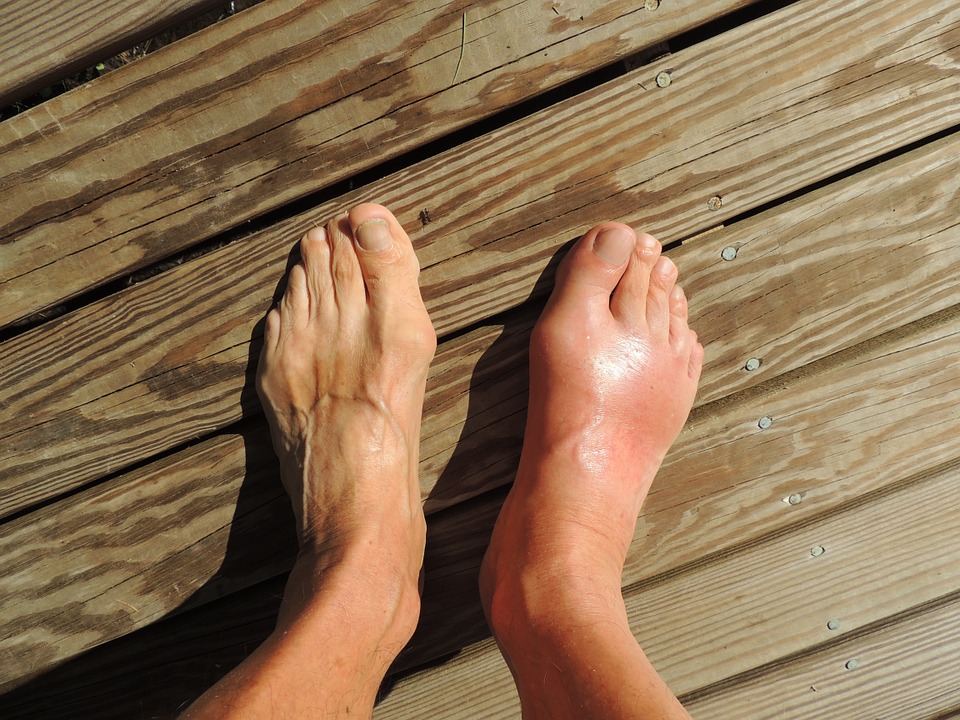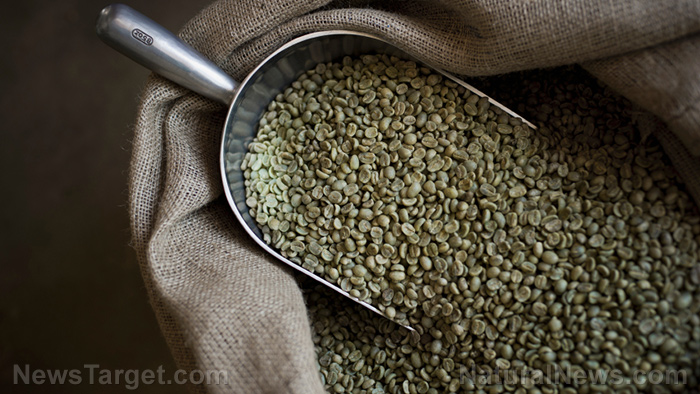With 1 in 5 kids now obese, Pharma sets sights on $50B market for weight-loss drugs
08/14/2022 / By News Editors

Twenty-two percent of U.S. children between the ages of 2-5 and 12-19 are obese compared with 18% a decade ago, according to a new analysis of nationwide health survey data.
(Article by Martha Rosenberg republished from ChildrensHealthDefense.org)
That means 1 in 5 kids are now obese. The analysis found that only children ages 6-11 were exempt from the weight gain trend.
Obesity, as opposed to “overweight”— weighing more than normal for someone’s height, age and gender — is defined as having a body mass index (BMI) of over 30. A healthy BMI is defined as between 18.5 and 24.9.
“Once again, our attention turns to one of the most tenacious and steadily increasing health crises in children,” Dr. Michelle Perro told The Defender.
Perro, a pediatrician and executive director of GMO Science, said children experience the subsequent downstream health disasters similar to adults such as metabolic dysregulation, cardiovascular disease, and mental health issues such as anxiety and depression.
“Obese children are also subject to bullying and low self-esteem,” she said.
In “predictable fashion,” Perro said, we are not examining the root causes — such as diet and chemicals — behind the soaring rates of obesity in children.
The new statistics on pediatric obesity come from a survey conducted at Louisiana State University’s Pennington Biomedical Research Center. Scientists at the center analyzed data from almost 15,000 U.S. children and teens from 2010 through 2020 to reach their conclusions.
The analysis found no difference in obesity rates between different races and ethnic backgrounds.
However, scientists did identify different gender-based rates: The obesity rate in boys rose to 21.4% from 18% a decade ago, while in girls, it rose to 21.6% from 17% a decade ago.
Amanda Staiano, Ph.D., an associate professor of pediatric obesity and health behavior at the Pennington Center who led the study said:
“What is even more alarming is these data were all collected prior to the COVID-19 pandemic, and other data published recently show that kids are gaining even more weight because of restrictions to their diet and activity during the pandemic.”
Data reported in The BMJ show the toll that the COVID-19 pandemic took on pediatric weight gain. According to The BMJ:
“Among a cohort of 432?302 people aged 2-19 years, the rate of body mass index (BMI) increase roughly doubled during the pandemic compared with the period preceding it.”
According to a Kaiser Permanente study:
“Youth age 5 to 11 years gained 5.07 pounds more during COVID-19 than during the same time period before COVID-19, while youth age 12 to 15 years and 16 to 17 years gained an excess of 5.1 pounds and 2.26 pounds over the prior year, respectively.”
The COVID-19 weight gain resulted in “almost 9% more children becoming overweight or obese,” Kaiser Permanente concluded.
The obesity trend does not stop when children reach age 19, according to a research letter published in the Journal of the American Medical Associations, which found that between 1976-2018, the mean BMI in young U.S. adults ages 19 through 25 increased from 23.1 in 1976-1980 to 27.7 in 2017-2018.
During that time span, the prevalence of obesity in young adults grew from 6.2% to 32.7% and the percentage of those at a normal weight decreased from 68.7% to 37.5%, the journal reported.
Obesity shortens life expectancy. It is linked to hypertension, high levels of triglycerides,
type 2 diabetes, coronary heart disease, stroke, gallbladder disease, osteoarthritis, sleep apnea, low quality of life, depression and difficulty with physical functioning.
Obesity-related cancers, including colorectal, uterine corpus, gallbladder, kidney, pancreatic cancers and multiple myeloma increasingly are being diagnosed in younger people.
Big Pharma eyes $50 billion obesity market
As obesity rates rise — in children and adults — Big Pharma sees profit potential.
According to Fierce Pharma, analysts at Morgan Stanley Research told clients that “drugmakers like Eli Lilly and Novo Nordisk are poised to unlock a global obesity market that could be worth more than $50 billion by the end of the decade.”
Price tags for Eli Lilly’s diabetes and weight-loss drug Mounjaro (tirzepatide), and Novo’s weight-loss and diabetes drug Wegovy (semaglutide) — both recently approved by the U.S. Food and Drug Administration (FDA) — helped fuel the forecasts.
Mounjaro and Wegovy are injectable drugs with projected profit margins as high as 40%, according to Pharma’s Almanac. Mounjaro costs $974.33 a month before insurance, Wegovy sells for about $1,627 a month before insurance.
It is not just high drug prices that make obesity a hot market. Since obesity in 2013 was officially classified as a chronic disease, it is now “on the cusp of moving into mainstream primary care management,” said Morgan Stanley — because it can be treated directly instead of treating its consequences, such as diabetes and cardiovascular disease.
“Therefore we expect excess weight and fat loss to become treatment targets for obesity and for treatment guidelines to adopt obesity as a primary target ahead of other associated diseases,” wrote Morgan Stanley analysts, which predicted a $54 billion market within seven-and-a-half years.
Recalling how high blood pressure pills became a $30 billion market by the end of the 1990s after their introduction in the 1980s, obesity is the “new hypertension,” Morgan Stanley declared, with the potential to become “the next blockbuster pharma category.”
Pharma’s weight-loss drugs linked to heart issues, cancer
Pharma’s track record in the weight-loss drug sector is marked by several failures.
For example, Fen-Phen, a weight loss drug that combined the drugs phentermine and dexfenfluramine/fenfluramine, was considered something of a “wonder drug” until it was withdrawn in 1997, for causing primary pulmonary hypertension and heart valve deaths.
An FDA drug reviewer had predicted problems if the two drugs were combined, but the agency approved Fen-Phen anyway. The same year the drug was withdrawn, the FDA approved the diet drug Meridia (sibutramine), which also was withdrawn, in 2010, from the market for cardiovascular problems.
The appetite-reducing action of weight-loss drugs and heart problems are so closely linked that an FDA advisory committee in 2012, voted to require all obesity drugs undergo clinical trials that assessed cardiovascular risks.
The Fen-Phen and Meridia failures didn’t stop San Diego-based Arena Pharmaceuticals from seeking FDA approval for Belviq (lorcaserin), a diet drug that also contained phentermine.
In 2010, the FDA Endocrinologic and Metabolic Drugs Advisory Committee voted against approving Belviq, citing questions about potential cancer risks and valvular heart disease.
Arena objected to the committee decision and in an open letter to the FDA wrote, “The dramatic elevation of concern over rat cancer,” could “result in irreparable damage to the bio-technology and pharmaceutical industry as a whole.”
The FDA two years later, in 2012, approved Belviq only to request the drug’s withdrawal in 2020, because of excessive cancer cases, including pancreatic, colorectal and lung cancers, associated with the drug.
Should we allow junk food makers to advertise to kids?
Most medical professionals and public health experts indict manipulative junk food advertising for the mushrooming obesity in children.
“We have a food supply of willfully addictive junk food designed to maximize eating, yet make futile recommendations for ‘portion control’ without addressing the root cause,” said Dr. David Katz after reviewing the Pennington pediatric obesity data.
Katz, a specialist in preventive and lifestyle medicine and president of the True Health Initiative in Tulsa, Oklahoma, added:
“Stated bluntly, this a national disgrace, because this problem is one with dire consequences that we could fix any time we genuinely committed to doing so. …
“We would be well advised to treat obesity in our children as we treat drowning — for, after all, they are drowning in the hyper-palatable calories of ultra-processed foods, and in exertion-sparing technologies that proliferate endlessly.”
The Pennington report’s lead author, Staiano, said:
“Healthcare providers should provide counseling and evidence-based programs to support families to adopt a healthier lifestyle. Insurance companies should follow the Affordable Care Act to pay for these weight-management services as a way to prevent debilitating and costly disease. …
“Parents and kids should talk to their doctors and school nurses to develop a healthy eating and activity plan that will work for their family.”
Bans on junk food advertising are effective, according to a recent BMJ report, which stated:
“Restrictions on the adverting of high fat, salt, and sugar products across the Transport for London network [a commuter train line] in 2019 resulted in 94?867 fewer cases of obesity than expected (a 4.8% decrease), researchers have estimated.”
According to a study in the International Journal of Behavioural Nutrition and Physical Activity, “There were 2,857 fewer cases of diabetes and 1,915 fewer cases of cardiovascular disease within three years of the advertising restriction than would be expected.”
One of the key junk food ingredients linked to obesity is high fructose corn syrup, a staple in junk food.
The authors of research published in the journal Evolution and Human Behavior suggested high fructose intake activates “an evolutionary-based survival pathway” of fat storage and decreased energy expenditure that developed in animals to fight starvation or prepare for hibernation or long-distance migration.
High fructose corn syrup and its metabolite, uric acid, likely induces a “foraging response that stimulates craving, impulsivity, risk-taking and aggression” the authors wrote.
They added:
“Fructose is unique among all nutrients in its ability to trigger a starvation-like signal even in the absence of true starvation. … Specifically, fructose mimics a starvation-like state by dropping the energy (also known as adenosine triphosphate or ATP) in the cell during its metabolism.
“While the metabolism of all nutrients uses energy, when fructose is metabolized, the energy levels fall more because of an absence of a feedback mechanism to stop the metabolism if energy levels fall too low …
“In addition, fructose stimulates hunger (via the induction of leptin resistance) and thirst (by causing a shift of water into the cell and raising serum osmolality). … The net result is that fructose stimulates food and water intake, increases energy (fat and glycogen) stores, induces insulin resistance to preferentially provide glucose to the brain, increases blood pressure and reduces sodium losses, and decreases oxygen needs by reducing mitochondrial activity and relying more on glycolysis. Thus, fructose is the ideal energy storing fuel.”
Ultra-processed food, synonymous with junk food, is especially risky for people who are genetically predisposed to storing it as fat, according to Dr. Caroline Apovian, co-director of the Center for Weight Management and Wellness at Brigham and Women’s Hospital in Boston.
According to a BBC report, in the U.K. and in the U.S., more than half the energy from food in the average diet comes from ultra-processed products.
The BBC’s Dr. Chris van Tulleken, host of “What Are We Feeding our Kids?,” was curious about how ultra-processed foods affect the body, so he experimented by changing his own diet.
Tulleken underwent several measurements of health biomarkers, which demonstrated significant changes from only four weeks of eating ultra-processed foods.
Brain scans showed the diet had created new links in his brain from areas responsible for reward to areas that drive automatic and repetitive behavior. This is a similar response to taking classically addictive substances, such as tobacco, alcohol and drugs.
Not just food — chemicals linked to obesity
Junk food advertising isn’t the only culprit in the U.S. obesity crisis — chemicals play a role, too.
For example, endocrine disrupters — chemicals lurking in the environment that can act like hormones and disrupt endocrine signaling pathways — are known to contribute to obesity.
Endocrine disruptors, found in most plastic products (even those marked “BPA-free”), include polychlorinated biphenyls (PCBs), polybrominated diphenyl ethers (PBDEs), phthalates and brominated flame retardants (BFRs) –– compounds frequently used in industry and found in pesticides and in consumer, household and building products.
In his article, “Endocrine Disruptors and the Obesity Epidemic,” Jerrold J. Heindel wrote, “The level of chemicals in the environment is purported to coincide with the incidence of obesity.”
Scientists are increasingly looking at endocrine disrupter exposure “during critical stages of development” in children as a factor in later obesity, according to research in the International Journal of Andrology.
Pregnant women who showed high levels of perfluorooctanoic acid (PFOA), another endocrine disruptor, were 3 times as likely to have daughters who grew up to be overweight, The New York Times reported.
Perro singled out glyphosate, the main chemical in Monsanto’s Roundup weedkiller, which is “ubiquitous in every American child’s diet” and is a “known endocrine disruptor and obesogen.”
“Without a conversation about the environmental toxicants in our children’s diets, water and air affecting their metabolic health, we have missed the mark,” Perro said.
“It goes without saying that focusing on a healthy diet is paramount in educating families, but must include a conversation about eating organics and avoiding GMOs and pesticides.”
Read more at: ChildrensHealthDefense.org
Submit a correction >>
Tagged Under:
Big Pharma, children's health, food science, medications, obesity, weight loss drugs
This article may contain statements that reflect the opinion of the author
RECENT NEWS & ARTICLES
COPYRIGHT © 2017 FIGHTOBESITY.NEWS
All content posted on this site is protected under Free Speech. FightObesity.news is not responsible for content written by contributing authors. The information on this site is provided for educational and entertainment purposes only. It is not intended as a substitute for professional advice of any kind. FightObesity.news assumes no responsibility for the use or misuse of this material. All trademarks, registered trademarks and service marks mentioned on this site are the property of their respective owners.




















